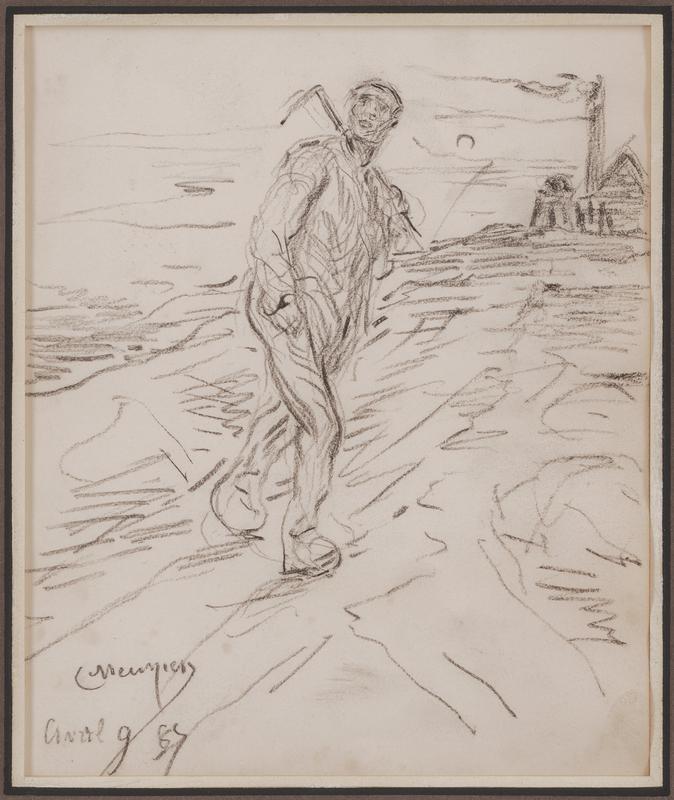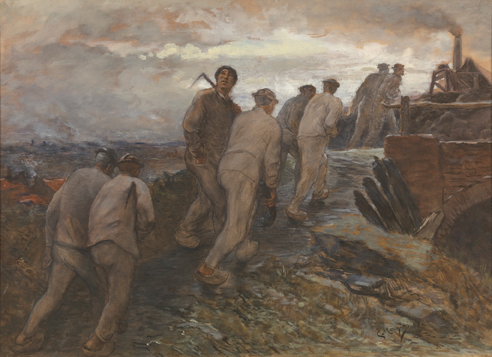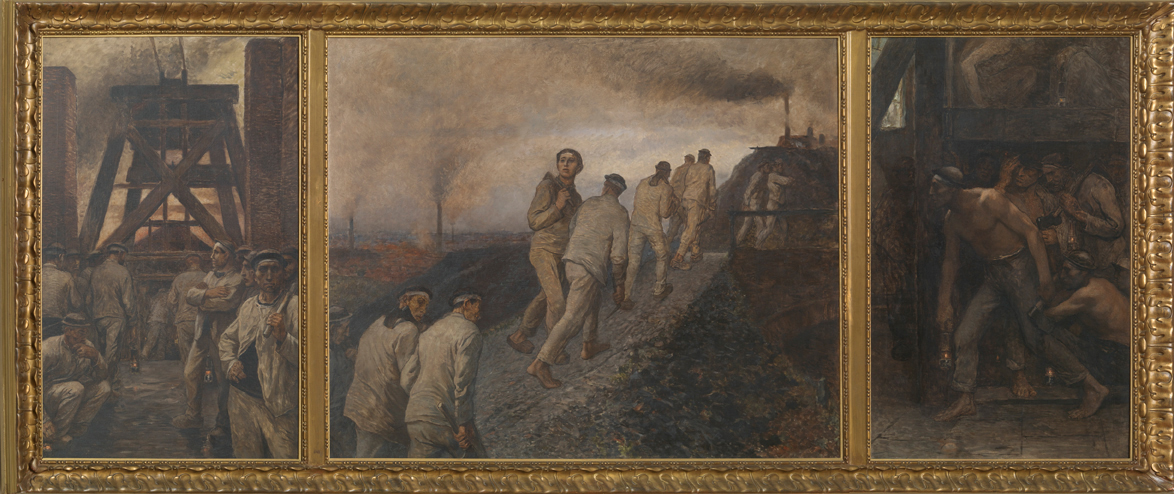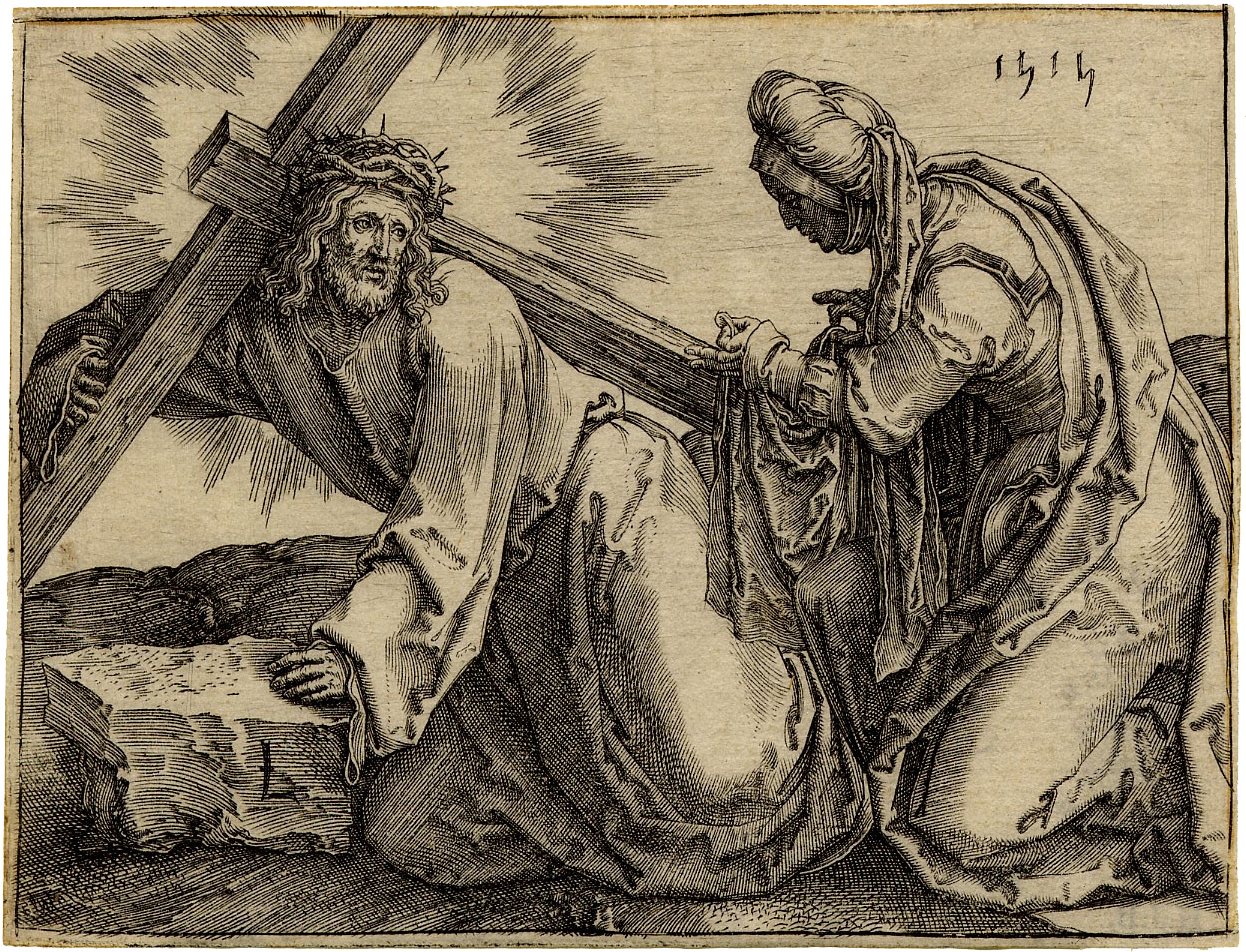
128. Constantin Meunier, On the Way to the Mine
| Artist | Constantin Meunier, Belgian, Etterbeek (Brussels) 1831–Ixelles (Brussels) 1905 |
| Title, Date | On the Way to the Mine (Sur le chemin de la mine), 1887 |
| Medium | Black chalk |
| Dimensions | 8 7/16 × 6 7/8 in. (21.5 × 17.5 cm) |
| Inscriptions + Marks | Lower left: C Meunier / Avril 9 87 |
| Provenance | [Mathieu Néouze, Paris, until 2018; to Weisberg]; Yvonne and Gabriel Weisberg, Minneapolis |
| References | "Oeuvres sur papier 1880–1930" (exh. cat.), Mathieu Néouze, Paris (March 2018), no. 2, ill. |
| Credit Line | Promised gift of Gabriel P. and Yvonne M.L. Weisberg, Minneapolis |
In the late 1870s Constantin Meunier had an epiphany after visiting the interiors of foundries and mills in and around Liège, Belgium. Amid the fire, steam, and jarring noise of massive machines and furnaces, he immediately understood that the workers were both oppressed and heroic. Already an established artist, a leader among Belgium’s naturalists, he found a new mission: the glorification of labor. This led to his 1881 travels through the “black country” of Wallonia, a region in southern Belgium with coal-mining and industrial areas. What he observed further galvanized his determination. Shortly after, visitors to the Galerie du Cercle Artistique et Littéraire (Artistic and Literary Circle Gallery) in Brussels were treated to a jarring sight. Amid the gilded, classicizing architecture and crystal chandeliers were Meunier’s frank drawings of miners and factory workers. It was quite a change for an artist who had been known for his observations of rural and monastic life.1


On March 4, 1887, Meunier was nearby when a coal mine blew up at La Boule, in the Borinage, in Wallonia. More than 100 miners died. The artist was present when bodies were being brought to the surface, and he witnessed families trying to find their loved ones among the scorched corpses. The year of this incident, he made the present drawing of a miner on his way to the pit. Meunier used this sketch as the basis for the central figure in an elaborate watercolor showing several men heading to the mine (fig. 1). More than a decade later, he reprised this image in a triptych on mining (central panel, fig. 2).

The altarpiece format and panel titles of the triptych say volumes about Meunier’s attitude toward the mine workers and the brutality they apparently endured. His titles—The Descent, Calvary, and The Ascent—come from the Passion and Resurrection of Christ. In the center scene, the workers climb a mountain to face torture and sacrifice. The figure from the Weisberg drawing takes on the role of Christ as he twists his body to look back while bearing a burden on his shoulder—a miner’s pick that stands in for a cross. Here, Meunier could have had in mind one of many images from earlier Netherlandish art (fig. 3). The left panel portrays the miners descending into an earthly hell. Meunier’s message is ultimately optimistic, however, as the right panel shows the figures returning to the world of the living.
GPW and TER
Notes
For a recent monograph on the artist, see Francisca Vandepitte, ed., Constantin Meunier: 1831–1905 (exh. cat.), Musées royaux des Beaux-Arts de Belgique, Brussels (Tielt, Belgium: Lannoo, 2014). See also a review of the exhibition by Thijs Dekeukeleire, Nineteenth-Century Art Worldwide, vol. 14, no. 3 (Autumn 2015). ↩︎